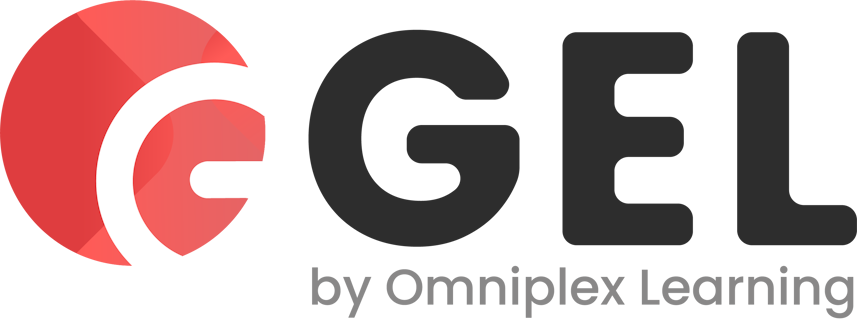What is ITIL® 4? A Complete Guide to the ITIL 4 Framework
ITIL 4 is the latest evolution of the IT Infrastructure Library (ITIL), the world’s most widely used framework for IT service management (ITSM). Designed to help organizations deliver high-quality IT services, ITIL 4 builds on the best practices of previous versions while introducing new principles to address modern IT challenges. In this guide, we’ll explore what ITIL 4 is, its key principles, benefits, and how it differs from ITIL v3.
Key Principles of ITIL® 4
ITIL 4 introduces a modern, flexible, and comprehensive approach to IT Service Management (ITSM). It emphasizes collaboration, automation, and delivering real value to customers.
Here are the key principles that define ITIL® 4:
The Four Dimensions of Service Management
- Organizations and People
This dimension highlights the importance of having the right people, roles, responsibilities, and culture in place. A supportive organizational structure and skilled staff aligned with the organization’s goals are critical for delivering effective services. - Information and Technology
This dimension covers the knowledge, data, and tools needed for effective service management. It also includes considerations for security, compliance, and integrating technologies to deliver and manage services efficiently. - Partners and Suppliers
Focusing on external relationships, this dimension emphasizes the role of partners and suppliers in service delivery. Clear agreements and effective collaboration ensure that all parties contribute to the design, development, and ongoing improvement of services. - Value Streams and Processes
This dimension focuses on how different parts of the organization work together to create value through products and services. It involves defining activities, workflows, controls, and procedures to meet objectives efficiently and effectively.
The ITIL® 4 Service Value System (SVS)
The Service Value System provides a unified framework that ensures all components and activities within an organization work together seamlessly. Its goal is to meet stakeholder needs and create value through IT services while fostering collaboration and adaptability.
The Seven ITIL® 4 Guiding Principles
- Focus on Value
Everything the organization does should ultimately deliver value to stakeholders. Understanding what matters to customers and ensuring all services and processes align with their expectations is key. - Start Where You Are
Before implementing changes, assess the current situation and identify what’s already working. Building on existing strengths can save time and resources. - Progress Iteratively with Feedback
Avoid trying to tackle everything at once. Break work into manageable steps and seek feedback at each stage. This approach allows organizations to adapt to changing needs and priorities. - Collaborate and Promote Visibility
Collaboration across teams and transparency in decision-making lead to better outcomes. Ensuring everyone has access to the right information fosters trust and improves efficiency. - Think and Work Holistically
No service or process operates in isolation. Considering the organization as a whole ensures that all elements work together harmoniously to deliver value. - Keep It Simple and Practical
Simplify wherever possible. Remove unnecessary steps or processes that don’t add value. This reduces complexity, minimizes errors, and boosts efficiency. - Optimize and Automate
Use resources wisely by optimizing processes before automating them. Automation enhances efficiency and frees up human resources to focus on more complex, value-added tasks.
Benefits of ITIL® 4 for IT Service Management
ITIL 4 offers numerous benefits for organizations looking to improve their IT service delivery:
- Improved Flexibility: Adapt to changing business needs with a more agile framework.
- Enhanced Collaboration: Break down silos and encourage cross-team collaboration.
- Greater Focus on Value: Align IT services with business goals to deliver measurable value.
- Integration with Modern Practices: Incorporate DevOps, Agile, and Lean methodologies into ITSM.
- Better Customer Experience: Deliver seamless IT services that meet customer expectations.
How ITIL® 4 Differs from ITIL v3
While ITIL® v3 laid the foundation for ITSM best practices, ITIL® 4 takes a more modern and holistic approach. Here’s a quick comparison:
| Feature | ITIL® v3 | ITIL® 4 |
|---|---|---|
| Focus | Processes and procedures | Value creation and collaboration |
| Structure | Linear service lifecycle | Flexible Service Value System (SVS) |
| Integration | Limited focus on modern practices | Integrates DevOps, Agile, and Lean |
| Approach | Rigid and process-driven | Adaptive and customer-centric |
ITIL® 4 Certification and Training Options
If you’re looking to gain expertise in ITIL 4, certification is a great way to validate your skills. Good e-Learning offers comprehensive ITIL 4 training courses designed to help you master the framework and advance your career. Our courses cover:
- ITIL® 4 Foundation: Learn the basics of ITIL 4 and its key concepts.
- ITIL® 4 Managing Professional: Dive deeper into ITIL 4 practices and techniques.
- ITIL® 4 Strategic Leader: Gain strategic insights to lead IT service management initiatives.
- ITIL® 4 Practice Manager: Manage, support and improve IT services.
- ITIL® 4 Extension Modules: Extend your knowledge and skills in IT service management.
Why ITIL® 4 Matters for Your Business
In today’s fast-paced digital landscape, ITIL 4 provides a roadmap for organizations to deliver efficient, customer-focused IT services. Whether you’re new to ITIL or upgrading from ITIL v3, adopting ITIL 4 can help you:
- Streamline IT processes
- Improve service delivery
- Align IT with business objectives
- Stay competitive in a rapidly changing environment
Frequently Asked Questions About ITIL® 4
What is ITIL® 4?
ITIL 4 is the latest version of the IT Infrastructure Library, a framework for IT service management that helps organizations deliver value through IT services.
How is ITIL® 4 different from ITIL® v3?
ITIL® 4 focuses on value creation, collaboration, and integration with modern practices like DevOps and Agile, while ITIL® v3 was more process-driven.
What are the benefits of ITIL® 4 certification?
ITIL® 4 certification validates your expertise in ITSM, enhances your career prospects, and equips you with the skills to improve IT service delivery.
Where can I learn ITIL® 4?
Good e-Learning offers accredited ITIL® 4 training courses to help you master the framework and achieve certification.
In Summary
ITIL® 4 is more than just an update to the ITIL® framework—it’s a transformative approach to IT service management that empowers organizations to thrive in the digital age. By understanding its principles, benefits, and differences from ITIL v3, you can unlock the full potential of ITIL® 4 for your business.
Ready to get started? Explore our ITIL® 4 certification courses and take the first step toward mastering ITIL® 4 today!


